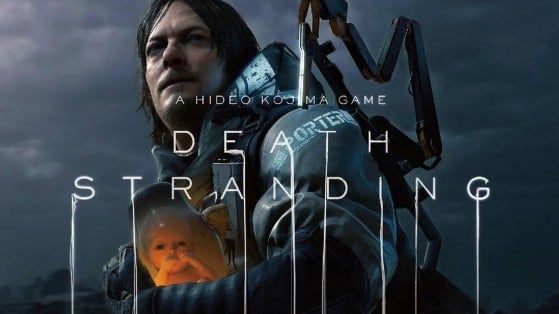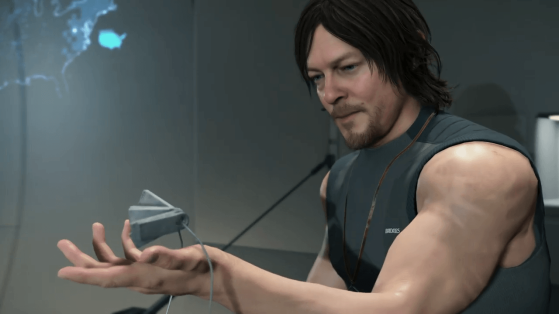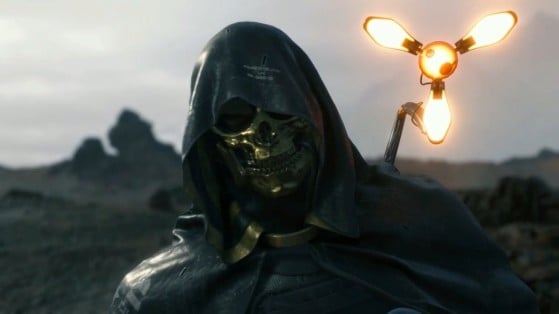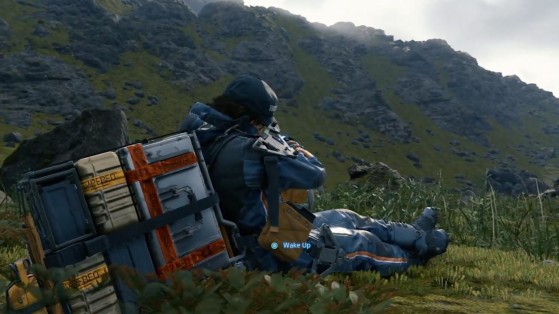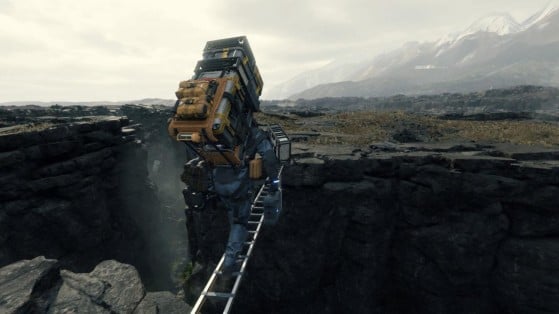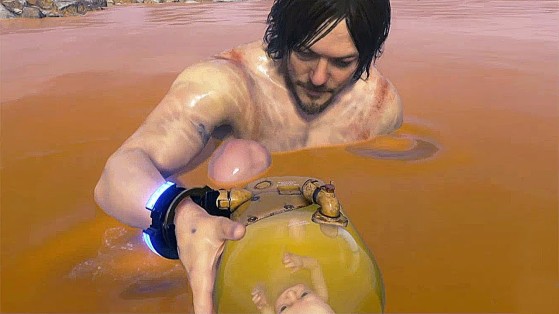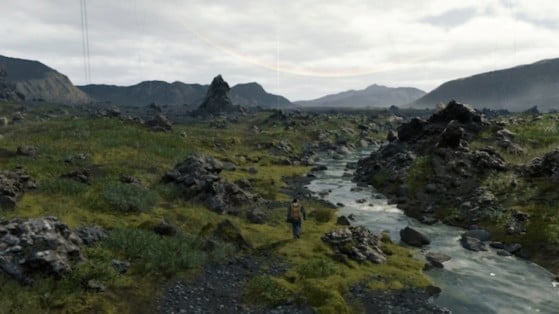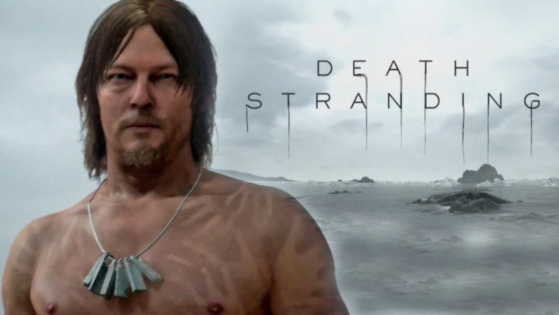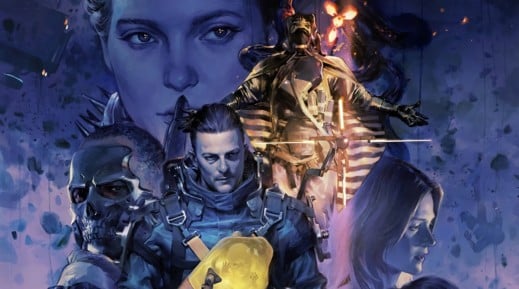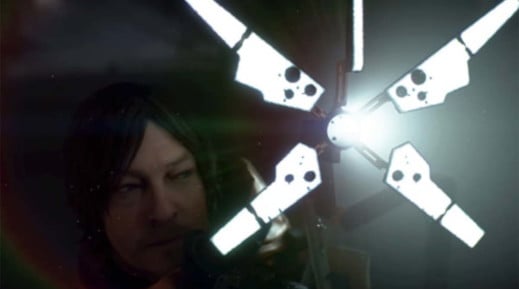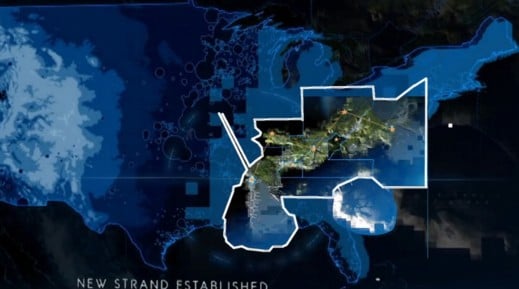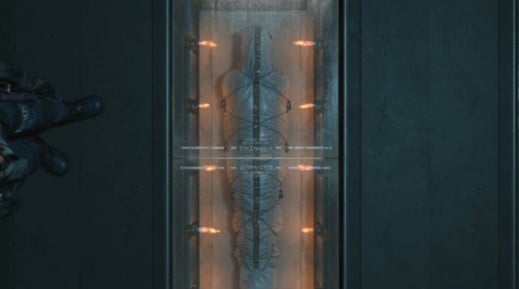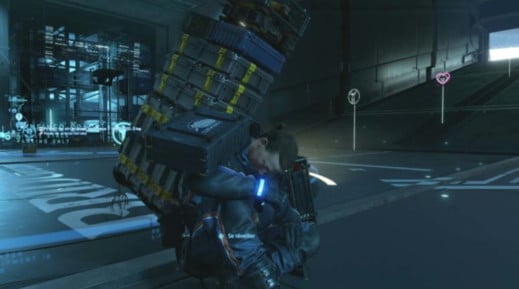After years of teasing interspersed with long silences, we’ve finally got our hands on Death Stranding. We’ve been immersed in its unique universe for almost three weeks now, and to be completely honest, we’re still having trouble getting to grips with it. Read on…
- Genre: Action/Adventure
- Release Date: November 8, 2019
- Platform: PlayStation 4 (PC to come in 2020)
- Developer: Kojima Productions
- Publisher: Sony (for PlayStation 4)
- Price: $59.99
- Tested On: PlayStation 4 Pro
Four years ago, after a bitter split with Konami, Hideo Kojima founded his own studio — Kojima Productions — with the support of Sony. Thanks to this association, Kojima was able to negotiate a deal to use the Decima Engine, from by Horizon Zero Dawn developer Guerilla Games.
Since then, a campaign of vague reveals and trailers edited only by himself, and announcements of an extensive cast that would rival any major Hollywood production. On November 8, players will finally be able to taste the fruit this has all borne.
The Walking Dead star Norman Reedus takes on the role of Sam Porter Bridges in Death Stranding, a ‘contract delivery man' with Bridges — a worldwide organization that is struggling to rebuild America. The country has been completely devastated due to neoliberalism, thanks to a series of mini atomic explosions caused by the Beached Things (BTs), entities from another world.
Under duress, Sam has to complete deliveries to the various refugee posts in America, in order to ‘reconnect’ everyone to the Q-Pidon — a particularly strange device that connects a city to Bridges.
We’ll stop there when it comes to story, because the script — as in any good Kojima game — holds an important place in the Death Stranding experience. Beyond the screenplay itself, it is the writing and subtext that counts more than anything.
Without revealing more, you just have to assume that nothing is ever as simple as it seems, and that succeeding in unravelling all the plot threads will require a good general knowledge of video games and cinema.
To be honest, even after finishing the game, we continued to be obsessed with it for many days — simply because we felt that some answers to important questions were not yet ‘complete’. In many ways, Death Stranding is a unique, atypical, and frankly exciting title, served by a mise-en-scène that commands respect.
Again, we’ll leave you to the pleasure of discovery, but the five-star cast is perfectly highlighted thanks to it being a game jam-packed with punchy scenes.
However, not all is perfect — some parts of the adventure border on the absurdity of pulp cinema. By now we have come to expect these sort of moments from Kojima, and thankfully they never drag on too long. Some of them even manage to provide us with hilarious moments that provide a perfect respite from the seriousness of the overall plot.
It’s not for nothing that the mention of Kojima has been omnipresent in communication regarding the game — while not megalomania, it’s a constant reminder that this is all his vision and message. As in movies, Death Stranding has a lot to say on a whole range of subjects.
For those who managed to avoid the 45-minute gameplay video shown at the recent Tokyo Game Show, the purpose and mechanics of Death Stranding remain a huge mystery. Even if you did see it, you’re probably still left scratching your head.
So, to start with the basics. In Death Stranding you will spend 99% of your time making deliveries. Even if everything is interspersed with cutscenes, the principle remains unchanged — you’re a ‘Point A to Point B’ FedEx-type courier, with some small detours from time to time.
However, as the expression goes, it’s not the destination that counts, but the journey — and Death Stranding is the perfect example of this.
Depending on the type of delivery, the cargo to be delivered, and the equipment at your disposal, situations will change completely and how you distribute the weight is of critical importance. The interface for this, which appears messy at first glance, allows for adaptation in order to optimise its use.
Why is this so important? Simply put, if your cargo is unbalanced, then you have a greater chance of wobbling or even falling over — which damages the delivery. Given it’s a desolate America, the terrain is particularly rugged, and the further west you go, the more difficult it will be to understand the constraints imposed by the biomes.
As well as good balance, you’ll need to keep an eye on Sam’s fatigue levels. These decrease as expected according to the weight he carries, but is also affected by weather conditions or the exertions you have him undertake.
If you find exhaust your endurance gauge, you’ll find you cannot consult the game’s menus, and you’ll be forced to remain motionless for a period of time, which can even be minutes-long.
Like Metal Gear Solid V, it’s therefore necessary to prepare well — especially knowing that every item will have a container Sam must carry even after consumption of its contents. These can all be recycled for materials to use on your journey and to craft other equipment.
As you rebuild the network, you will gain access to much more efficient equipment, making difficult crossings more bearable. These may be the basics, but the hostile environment of Death Stranding will take great pleasure in shaking you up in many other ways.
We haven’t mentioned it yet, but the Bridge Baby (BB) attached to Sam’s midriff is actually a living radar — when the weather turns to the Timefall rain, which accelerates ageing on contact, the Beached Things come out in force.
Invisible to the naked eye, these creatures will try to lure you into the abyss should they sense your presence. You’ll need to keep an eye on your shoulder-mounted odradek (mechanical sensor), which is connected to the BB and indicates the proximity and position of threats.
Death Stranding then becomes something of a game of cat-and-mouse, since the effects of Timefall will also accelerate the deterioration of your cargo. This effect can be countered with a cryptobiote.
Being swallowed by a Beached Thing doesn’t lead to death, but rather to another world which brings up buildings of another age. The result is visually impressive, and while you can engage these creatures, it’s better to avoid them in the early hours of the game.
In addition to the BTs, MULEs will not hesitate to try and liberate you of your goods to add to their spoils of war. These bandits have already been shown in some reveals, and if they succeed scan you, the only options are flight or fight. As for murder, let’s just say we’d advise you not to even think of it…
Taking all these elements, the concept of Death Stranding is already solid. Now, throw in an asynchronous multiplayer element in which the effects of other Sams (played by real players) around the world can be seen and interacted with.
As an example, say we put down a ladder to make it easier to climb a hill. All passing players can use that ladder, and you can even rewards from the ‘likes’ that makes up the bulk of the game’s progression system. This small interaction, in turn, will give you access to new constructions.
We’ll not reveal just how much is possible here, but it’s impossible not to talk about the shared storage function. Placed on the map, items can be left by players to help you on your journey and vice versa, or may contain cargo you can deliver for them — for a few likes, or simply the feeling of having helped out.
It’s thanks to this that the concept of reconnection, that Kojima has spoken of many times, becomes clear. It’s also one that’s pushed far, since it is the players themselves who fill the map with additional objectives and points of interest.
The community with whom you are reconnected will push you to rebuild highways that drastically facilitate travel from one end of the map to the other. You really have to play the game to get the sense of building something with others.
You’ll be left feeling like a pioneer, traversing these rugged lands of the central area, and little by little you’ll discover a world filled with directions that greatly help with your deliveries. While you are alone in the world, it is one that feels alive. Without going into detail, it is an entire ecosystem that you’ll decode as you go along.
There are some issues with this dull-yet-idyllic landscape, such as showers that break your rhythm and whose locations seem fixed, but before you detect these patterns you’ll have played for approaching a hundred hours.
These off-road trips are few compared to the almost unprecedented pleasure we have taken in helping others, just for the sake of being useful. It’s a feeling MMOs haven’t provided in a long while, and is well implemented here.
Death Stranding is a beautiful game, and you’ve probably seen the majestic natural environments already in the trailers and screenshots released so far. Similarly, the modelling and performances of the main characters is like supping on caviar — coupled with Kojima’s direction, it wouldn’t look out of place in Hollywood.
Death Stranding even succeeds in going beyond that, and we can only marvel at the way the soundtrack is integrated into the game. The songs are often melancholic, and always seem to highlight a situation or sumptuous panorama at the right moment.
Tested on a PlayStation 4 Pro and a 4K display worthy of the name, the effect was even bigger, even if some of Sam’s animations brought us back down to earth.
Let’s be clear here — the animation and the physics engine supporting the gameplay are generally very good. However, the character’s inertia sometimes gives rise to strange interactions with the environment, usually linked to collision detection.
We feel that the transition to the next-generation of consoles will do Death Stranding a lot of good, since the PS4 Pro seems to show its limits here — especially when elements from other worlds come to enrich your map.
Jumbled together, we notice clipping, framerate drops, and some low-quality textures. Given the scale of the game these are trifling, but it still should be noted that the game is far from technically perfect.
Death Stranding is nevertheless one of the most ambitious titles currently available on the Sony PlayStation, alongside God of War and Horizon Zero Dawn.
